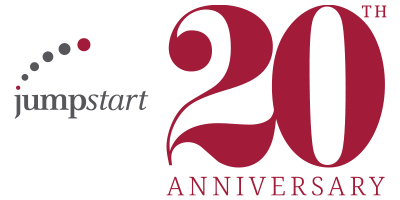
SaaS Growth Made Simple: How to Build a Sustainable Go-to-Market Machine
By JumpStart Ventures
3.9 minute read
In today’s fast-paced and highly competitive Software-as-a-Service (SaaS) industry, having a solid and effective Go-to-Market (GTM) strategy is critical to the success of your business. GTM is essentially the sales and marketing funnel that outlines the steps you will take to attract potential customers, convert them into paying customers and ensure they remain loyal to your product over time.
In this blog, we will discuss how to build a sustainable GTM machine for your SaaS business.
Why do you need a Go-to-Market strategy?
You may have developed an incredible product, but without a thorough GTM strategy, it may not reach its potential audience. A GTM strategy helps you to reach your target audience and convert them into paying customers. It also enables you to retain customers over time by ensuring there is a good product-market fit and user experience supported by excellent customer service. If you do not have an effective GTM strategy, you risk missing out on potential customers and ultimately, your business may not be sustainable.
To build a sustainable GTM machine, you need to focus on six key areas:
- The Market: Dig into your market potential. Are you going after a new market or an already established one with key players? Determine the need gaps in the market along with the niched-down segment you’ll occupy and thrive in. Then, you’ll need to calculate your Total Addressable Market (TAM), Serviceable Available Market (SAM) and Serviceable Obtainable Market (SOM) to assess the viability of your business model.
- Positioning and Pricing: Define the urgent, important and common problem that your potential customers are facing. Decide how you want to position your product in the market, such as a low-cost option for small businesses or a premium option for larger enterprises to determine the pricing strategy that will work best for your product.
- The Competition: Figure out who your competitors are, consider how they approach the market and establish how you will differentiate yourself from them. Identify the underserved sectors and areas of opportunity.
- Messaging and Strategic Narrative: Create brand messaging and a strategic narrative that speaks to your target customers. Write up your Ideal Customer Profile and your Initial Customer Profile in detail. By understanding your target customers’ goals and aspirations, you can craft messages that will resonate with them the most.
- GTM Activation: Mobilize your strategy and select appropriate marketing channels such as inbound, outbound, partnerships and marketplaces. Create hypotheses and set small experiments to test them. Build and run your sales funnel, map out your customer journey, or hybrid sales.
- Product Marketing: Continue to develop and refine your product strategy to address the needs of your target customers and maintain your competitive edge. Plan to develop new features and functionalities that will meet the evolving needs of your customers. Be sure to clearly communicate the value of your product and provide excellent customer service to retain existing customers.
It is essential to measure the effectiveness of your GTM strategy regularly. Track key metrics such as customer acquisition cost (CAC), customer lifetime value (CLTV), conversion rate and churn rate. By tracking these metrics, you can identify areas for improvement and adjust your GTM strategy accordingly.
Building a sustainable GTM machine is crucial for the success of your SaaS business. Keep in mind that building a robust GTM strategy is an ongoing process and will require refinement and adjustment as your business evolves. With dedication, experimentation and continuous learning, you can create a sustainable GTM machine that will accelerate your growth and help you achieve long-term success.

